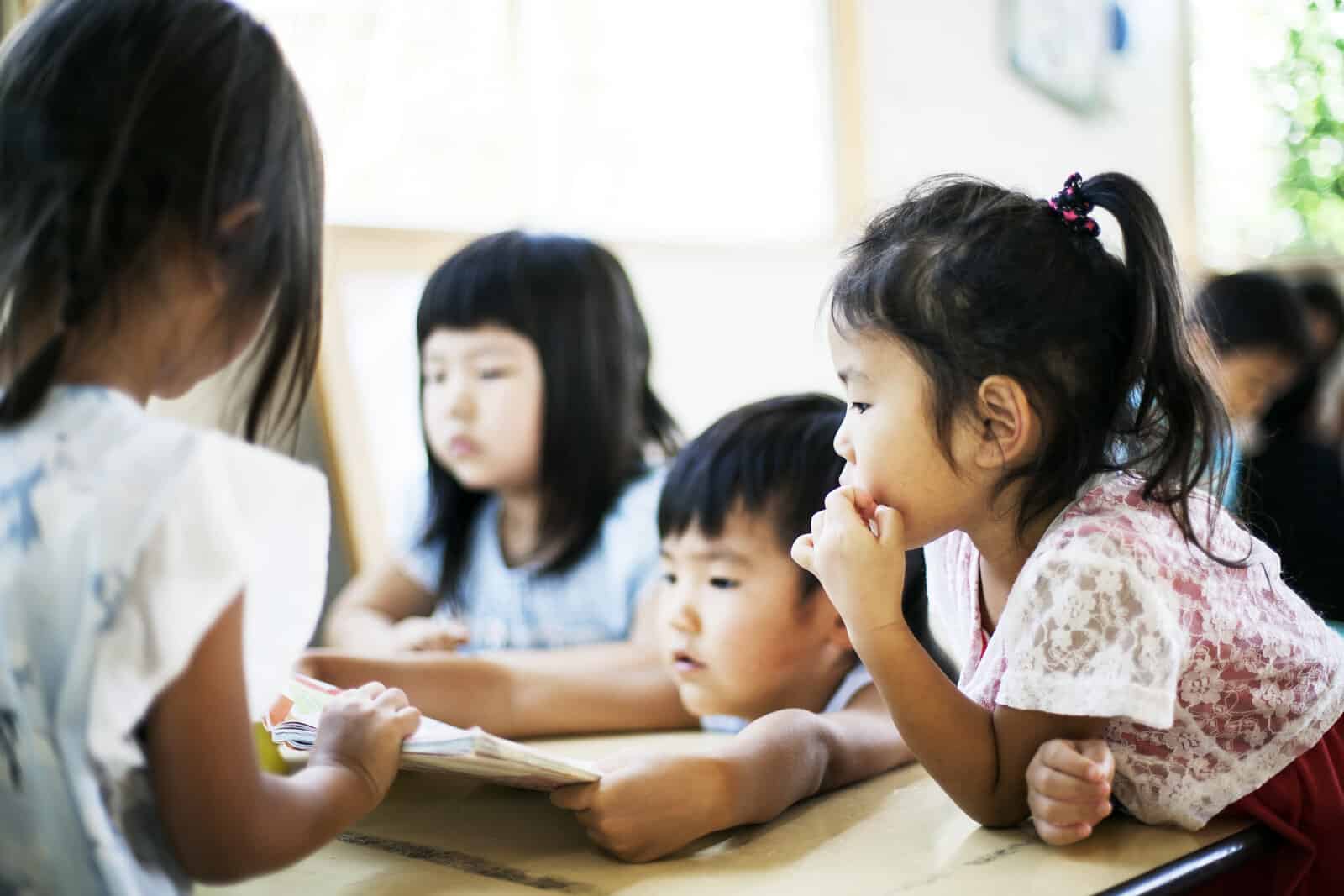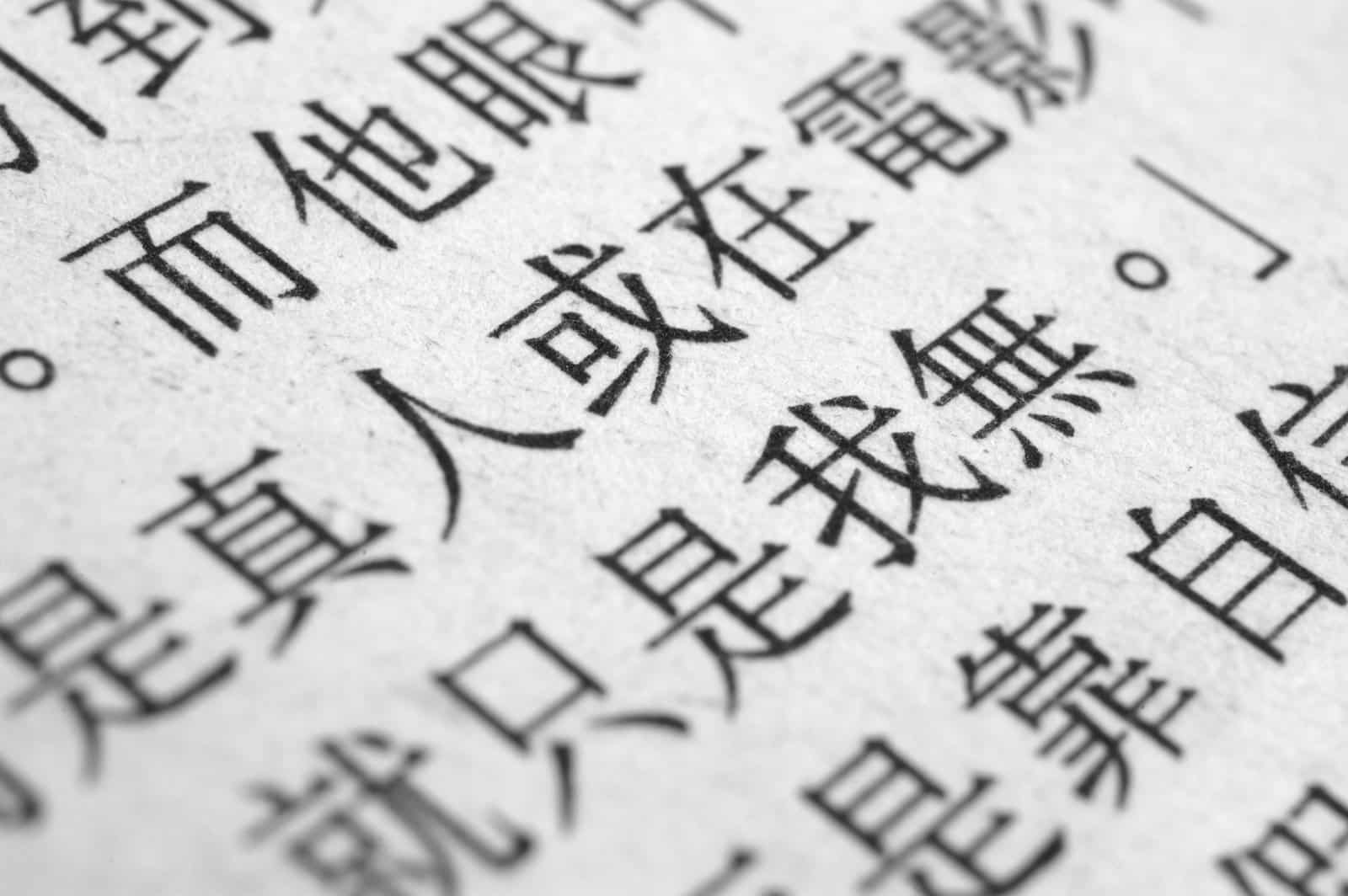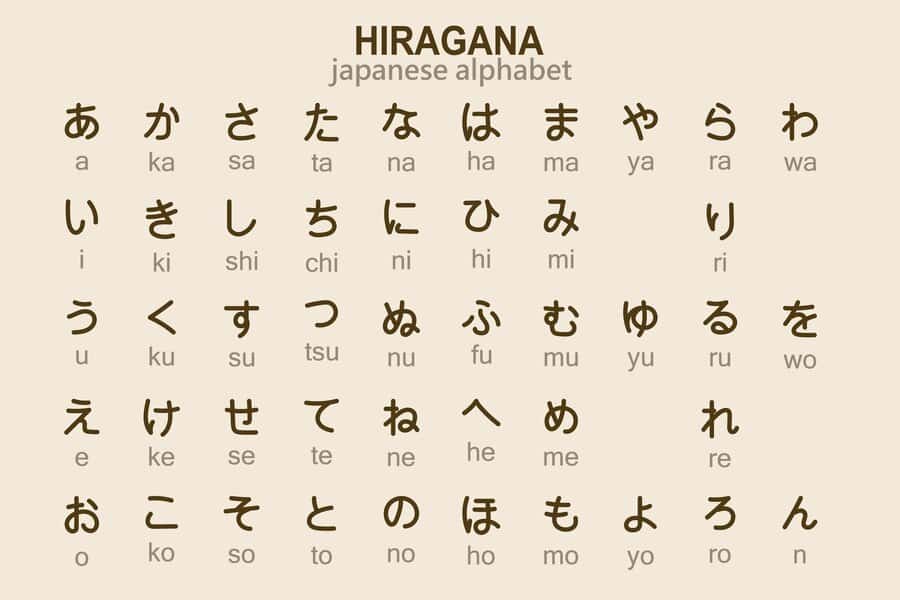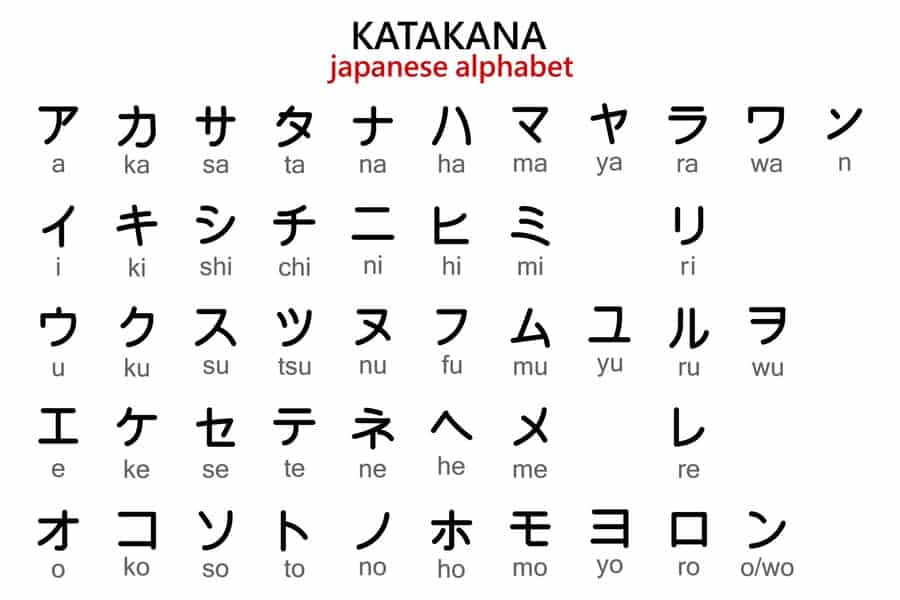
Japanese Language: The Genius History and Development of the Japanese Language
As of 2022, over 7100 languages are spoken worldwide. Some are incredibly famous, and others are narrowly spoken. Some are easy to learn, and others are among the most complicated languages. The Japanese language is a very interesting one!
Some are spoken in an incredibly wide range, such as English, which actually comes on top of the list. Interestingly, with English in particular, non-native speakers are double the number of native speakers.
More specifically, around 743 million people around the world speak English as their second language. In contrast, those who have it as their native language are 378 million! Thanks to the infinite number of free and paid resources on the Internet, learning English has become relatively simple.
Besides English, Spanish is considered relatively easy to learn. It is the first language of 20 countries, most of which are in South America, and the mother tongue of 463 million people. That makes it the third most spoken native language after Hindi, ranking second, and Mandarin Chinese, ranking first.
Speaking of Mandarin Chinese, it is one of the most challenging languages there are to learn. Those lucky to be born in China, Taiwan, Malaysia, Indonesia, or Singapore speak it as their native language and collectively make up 918 million.
On the other hand, millions who were not lucky to be born in China, Taiwan, Malaysia, Indonesia, or Singapore were not stopped by the fact that Mandarin Chinese is hard and did attempt to learn it. Now, about 199 million people speak Mandarin Chinese as a foreign language, most of whom live in Asia.
So is this the case with other known-to-be-difficult languages?
Well, not necessarily. Take, for example, another incredibly complicated Asian language, Japanese. Spoken by 125.6 million native speakers, there do not seem to be as many non-native Japanese speakers as Mandarin Chinese.
So what makes Japanese that complex? What is the Japanese language in the first place? When did it originate? How did it develop? And why is it so difficult to learn?
Well, this is what we discussed in our article today.
So let’s hop into it.

The Japanese language
As the name suggests, Japanese is the official language of Japan, and that is where it is primarily and most widely spoken by around 125.7 million native speakers.
To understand how Japanese originated, we first need to say a word about how languages are categorised.
Like the animal kingdom, languages, too, belong to language families. Each family includes a bunch of languages that descended from the same ancestor language.
For instance, English, Dutch, and German come from a family called the West Germanic language family. On the other hand, Spanish, French, Italian, and Portuguese belong to the Romance languages, not only because they have tender sounds but also because they come from the Romans, who spoke Latin.
Likewise, Japanese comes from a family of languages called Japonic, which descended from a much older family called Proto-Japonic.
It is not known for sure how the Japanese language started or what it was like since humans settled in Japan thousands of years ago and up until the fifth century AD. That is because Japanese people did not know writing back then, and whatever language they used was only spoken and not written.
Yet, we can only trace the development of the Japanese language to the beginning of the fifth century or 400 AD. Around that time, Korean scholars who were using the Chinese writing system went to Japan and introduced it to the Japanese.
So the Japanese people used the same Chinese alphabet to represent the sounds of the old Japanese language they used back then.
Development of the Japanese language
Since the adoption of Chinese characters, Japanese underwent several changes over hundreds of years. During that long, long period, it developed as a language in terms of vocabulary content, structure and grammar, as well as functions, reading, writing, listening, phonetics, and speaking.
This long, long period was divided into several relatively shorter periods, each marking the development of Old Japanese into Early Middle Japanese, then to Late Middle Japanese, and eventually to Modern Japanese, which is now used in Japan.
From the late eighth century up to the late 11th century, Japanese developed into what was known as Early Middle Japanese. It was characterised by changes in the sounds or phonetics of the language, consonants, vowels, and syllables.
Then, from 1185 to the early seventeenth century, that Early Middle Japanese developed into Late Middle Japanese, which witnessed changes in grammar, such as how verbs and adjectives were structured.
In this period, too, Japanese started borrowing vocabulary from European languages. This was the vocabulary that had no equivalent in Japanese and is known as loanwords.
Late Middle Japanese was in use until 1603, when a new wave of changes started. This included changes in the dialects, resulting in a large number of them, as we will see in a bit, as well as sentence structure and parts of speech.
Around this period, Japanese continued borrowing words from European languages, especially in many fields. For instance, they took words about medicine from German, words about art, music, and food from French and Italy, besides others from English, Dutch, and Portuguese.
Distribution of the Japanese language
The spread of any language has been widened by colonisation. When Japan occupied Taiwan, Korea, and parts of China during the early and mid-20th century, they imposed Japanese as the official language of these countries. In other words, they demanded everyone to learn it, so they did.
Since these countries were freed way earlier than the Japanese had thought, the new generations did not learn the language. But those who survived the occupation and are still alive can still speak Japanese. Those are among the small percentage of non-native Japanese speakers found all over the world.
Aside from those countries, Japanese is not spoken as the first language or used as a second language in any country in the world.
Dialects
People living in every region develop their own pronunciation of the language and a vocabulary set that describes their environment. You may think of it as a cultural code for each area, something that genuinely distinguishes them. This is known as a dialect.
But why does this happen? Why cannot all regions have the same dialect?
Well, it can be explained by understanding how dialects formed long, long, long ago.
Dialects developed centuries ago because regions were somewhat isolated from one another. Thanks to the lack of easy transportation, it was hard for people back then to move from one region to another. This hindered the spread of dialects. So every area preserved its dialect pretty much uninfluenced.
That is why it absolutely makes sense that large countries have several dialects. Russia, the largest country in the world, has 35 dialects. Likewise, the US, ranked the third largest country in the world, has about 30 different dialects.
But Japan has an area of 377,915 km². That is only 2.2% of the size of Russia. Accordingly, there should be much fewer dialects in Japan than in Russia. But this is not the case here. In fact, there are 47 dialects spoken in Japan. Moreover, many of these dialects are not understood by speakers of other dialects.
So why is that?
Well, it all comes down to the nature of the country. Though Japan is small, it is, in and of itself, a large island, made of over 6000 islands, with the entire population living on only 260 of them.
The nature of these islands is also complex, characterised by high mountains and deep valleys. So besides every island being isolated, the regions in one island are mostly isolated as well. As a result, the spread of local dialects was prevented, making them even not understood by others.
But such a high level of dialect diversity, to the point that some dialects sound like independent languages, is not good for one united country. So in 1886, the Tokyo dialect was chosen as the standard dialect of the entire country.
While each region could still keep their dialect, they had to speak in standard Japanese when communicating with outsiders. In addition, a standardised writing style was also made obligatory for school students to study.
Over the years, the imposing of the Tokyo dialect and its wide usage in mass media has profoundly made it used by most of the population. This caused several local dialects to disappear.
Vocabulary
Thanks to the connections that happened between the different countries, whether it was a negative connection caused by occupation or a positive one through cultural cooperation and exchange, it seems like many languages have borrowed words from others.
These borrowed words should generally stay a minority in the vocabulary range of any language. Yet, this can change depending on how significant the influence of foreign languages is.
In Japanese, the influence of Chinese and European languages seems to have been so large that the percentage of foreign vocabulary is considerably big. In Japanese, vocabulary divided into four categories
- Native Japanese words.
- Words that originated in or by Chinese (50% of the Japanese vocabulary).
- Words taken from European languages (known as loanwords).
- Words that depict sounds (such as clash or boom in English).
Writing
A language alphabet is the base of writing. So what is the alphabet of Modern Japanese?

Well, the Japanese alphabet is not as simple as that of most other languages. But at least it follows the same definition of an alphabet anyway.
So what does an alphabet mean, to begin with?
Every language is basically made up of a bunch of sounds. Arrange these sounds differently, and you will get a new word with a brand new meaning every time. The alphabet is the set of characters that represent these sounds. Matching every character with its corresponding sound enables reading.
That is the same with Japanese, at least to some extent.
In Japanese, there are a total of 46 sounds. But they are represented by three different alphabets: hiragana, katakana, and kanji; each is used for a different purpose.
Hiragana
Hiragana is a group of 46 written characters, five of which are vowels and the rest are consonants. Each of these characters represents one sound. Hiragana is mainly used to write Japanese words.
Each sound is either a vowel or a consonant or two, followed by a vowel. In other words, each sound, in and of itself, is a syllable rather than a single sound. For instance, the English letter (s) represents just one sound. In Japanese, the sounds are either sa, su, se, so, or shi.

Katakana
The second alphabet of the Japanese writing system is katakana. It is another of 46 different characters that represent the same 46 sounds of Japanese. However, katakana is used only to write Japanese words borrowed from other languages, loanwords.
For instance, the word ‘milk’ is pronounced in Japanese the same as in English but is written like that ミルク.
Hiragana and katakana were originally Chinese characters but were simplified over the years and became independent alphabets. We can combine both in one sentence if it contains some native Japanese words and other loanwords.

Kanji
The third alphabet used in Japan is kanji. This alphabet uses Chinese characters to represent native Japanese words. Well, this is the first Japanese alphabet ever used, thanks to the Chinese influence, as we mentioned earlier. And it is still used up now.
One difference between hiragana and katakana on the one hand and kanji on the other hand is that each character of the first two more or less represents a sound. So when combining certain characters, you make up one word. On the other hand, each kanji character equals one word.
So we can somewhat think of kanji as a vast vocabulary range.
There are around 50,000 kanji characters, 2000 of which are the most commonly used and what learners, whether Japanese or foreigners, must learn to get along. Yet, that does not make kanji less complicated. In fact, the kanji characters are more like complex drawings. In other words, it does take a great deal of time to learn kanji and easily recall which character means what and looks like what.
Kanji is used as the official writing system. Most newspapers, books, school materials, and even street signs are written in kanji, so learning it is a must. In fact, studying kanji is obligatory in Japanese education, basically starting from primary school.
Kanji vs hiragana
To make kanji readable for youngsters and those still learning or struggling with it, each kanji character is represented by their adjacent hiragana characters. Remember that kanji are words while hiragana are sounds. So one kanji character equals at least two characters in hiragana. And they are usually written on top of the kanji in a way called furigana.
This way, if someone cannot read kanji, they will be able to once they read the hiragana characters above the word.
But why is using kanji necessary if it is that hard? Is hiragana only not enough?
Well, somehow, yes.
The thing with hiragana is that there are no spaces between the words. One sentence is written as a group of equally spaced characters. So it can be challenging for the reader to know where a word ends and where the next one starts. So hiragana is more likely to be used in children’s books because the text is usually simple and can be easily understood with the help of the drawings.
But with kanji, each character represents a word. So even with no spaces, a full text in kanji can be easily understood by someone familiar with at least the most common kanji characters.
Conclusion
And here comes the end of today’s lesson about the Japanese language.
In this article, we discussed the origin of Japanese and how it developed from being only an oral language into becoming one of the most complicated languages to learn.
Then we moved to the underlying reason why Japanese has 47 local dialects despite the relatively small size of Japan. After that, we understood the divisions of the Japanese vocabulary, part of which, the loanwords, represents the words borrowed from other languages.
Finally, we finished with the three writing systems in Japanese, hiragana, katakana, and the Chinese-adopted kanji. We studied the structure of each one and for what purpose it is used.
We hope this lesson has given you a simple idea about the Japanese language and what makes it that complex.
And until another lesson, keep learning.
Why not subscribe to our LearningMole Library for as little as £1.99 per month to access over 1300 fun educational videos.



Leave a Reply